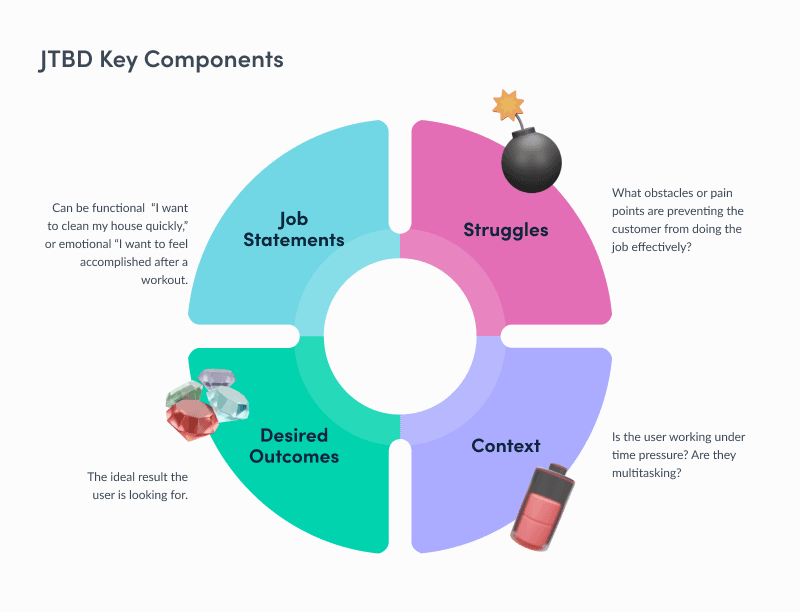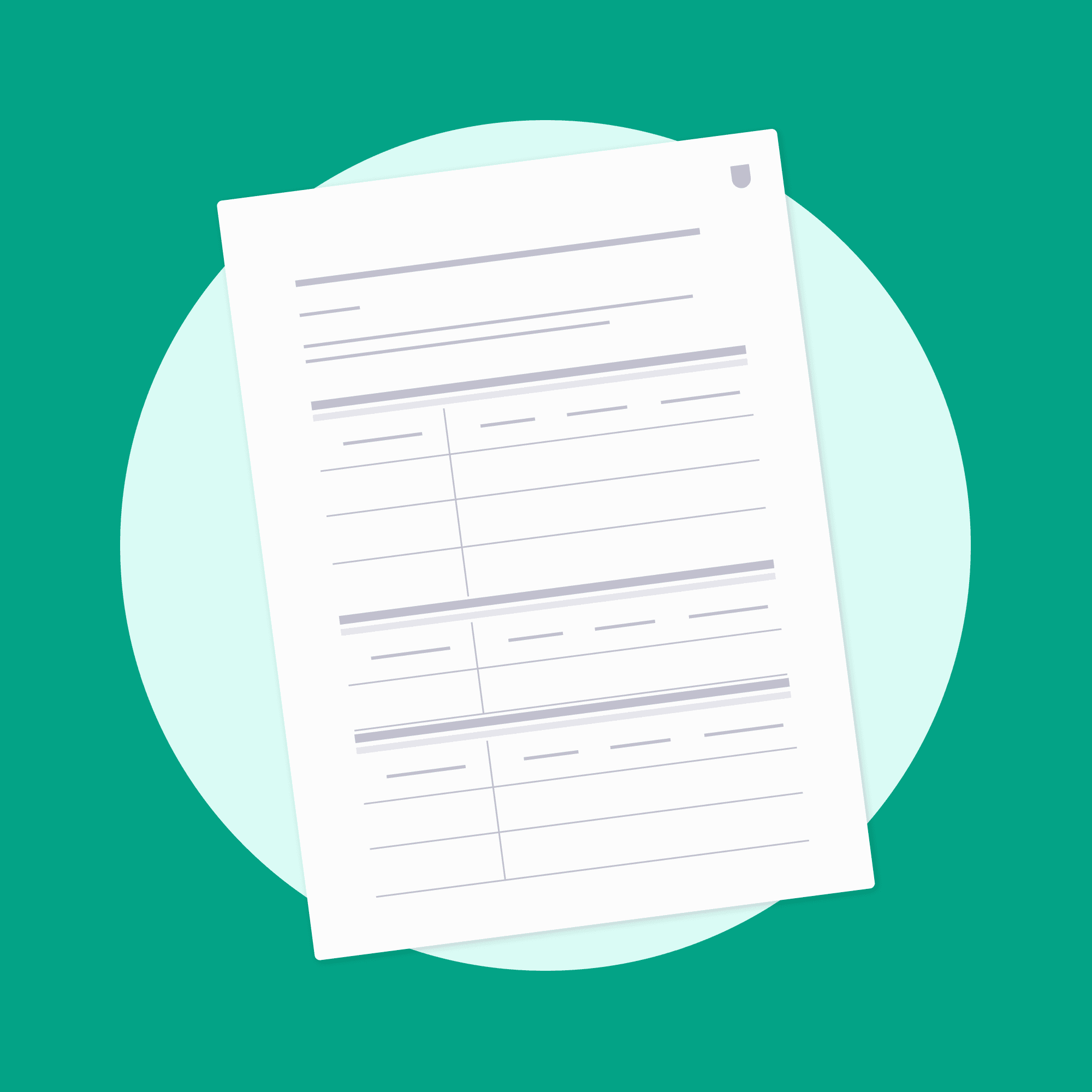Updated: July 16, 2025- 16 min read
Growth strategies start with the product. Customer-led growth starts with... the customer.
It sounds obvious, but it’s not how most companies operate. They build, launch, and optimize around features, wishes of the superiors, and incomplete data, not customers. But when you flip the focus and build around real customer needs, you unlock something different: better user retention, stronger word of mouth, and growth that compounds over time.
In this piece, we’ll break down what customer-led growth actually means, how it differs from other popular growth models, and how your team can start building a strategy around it.
Free Value Proposition Canvas
Learn how to take user problems as the foundation of your solution and only build products that matter with our free Value Proposition Canvas!
Get Yours Now
What Is Customer-Driven Growth?
Customer-driven growth, also called customer-led growth, is a business strategy where product decisions, marketing efforts, and growth initiatives are shaped directly by customer insights.
Instead of starting with the product or a sales target, product teams start with what customers truly need, experience, and value. The logic is straightforward here: 74 percent of consumers, according to KPMG, reported that product quality inspires loyalty.
The goal is to create solutions that solve real problems, in ways that customers naturally want to use, recommend, and keep paying for. That’s ultimately what they consider a “quality product”.
It’s more than collecting feedback or running surveys. It’s about using customer behavior, interviews, and feedback loops to shape everything from product features to product positioning and product roadmap priorities.
In short: customer-driven growth is growth fueled by listening, learning, and acting on what matters most to your customers.
An example of customer-led growth in action
Imagine your team builds a B2B analytics tool.
After months of shipping new reporting features, usage still isn't growing as expected. You talk to your customers and find that most of them aren’t using those advanced reports. Instead, they keep exporting data to spreadsheets so they can share simple summaries with non-technical stakeholders.
That insight leads you to prioritize a new feature: one-click, presentation-ready dashboards tailored for execs. Within a month of releasing it, you notice a spike in usage and positive feedback. Customer success teams report faster onboarding. Churn drops. Most importantly, product teams develop intuition for understanding customer needs.
That’s customer-driven growth. Not just building what you think adds value, but finding out what customers need to succeed. As Tomer London, the Co-founder at Gusto, puts it on The Product Podcast:
Instead of being data-driven, be data-aware. Build your intuition by talking to customers.
Is customer growth strategy rooted in Agile?
Yes, customer-led growth is inherently agile, but with a lowercase “a.”
It’s not tied to a specific Agile methodology like Scrum or Kanban, but it aligns perfectly with the core principles of agility: being customer-focused, iterative, adaptive, and feedback-driven.
Here’s how they connect:
Agile teams work in short cycles and respond to change.
Customer-led growth thrives on frequent customer insights and uses them to adjust priorities quickly.Agile emphasizes delivering value early and often.
CLG ensures that what you deliver is what customers actually find valuable.Agile encourages cross-functional collaboration.
CLG requires that same collaboration to make customer feedback actionable.
So while CLG isn’t a formal Agile methodology, it complements and strengthens Agile organizations by grounding them in real customer understanding. If you’re working in Agile sprints but never talking to customers, CLG is the missing piece.
Benefits of Customer-Led Growth
Customer-led growth is a practical, proven way to build better products and stronger businesses. When you align your strategy around what customers actually want and need, you make better decisions across product, marketing, and support.
Here are some of the key benefits of adopting a customer-led growth strategy:
Higher user retention: Products shaped by real customer needs are more likely to be used consistently over time.
Stronger customer reference: Customers who feel heard and understood are more likely to recommend your product to others.
Improved product-market fit: Continuous feedback loops help you adjust and evolve toward what the market truly values.
Smarter product prioritization: Customer insights can clarify what features or improvements should come next—reducing guesswork and saving time.
Faster onboarding and product adoption: When your product matches the way customers think and work, they adopt it more quickly and with less friction.
Better customer relationships: A feedback-driven approach shows customers you value their input, which builds trust and long-term loyalty. According to Renascence, it ultimately leads to 15% increase in customer retention rate.
Lower churn: When a product genuinely solves customer problems, there's less reason to leave.
Increased revenue per user: Understanding what customers value can help you create features or tiers they’re willing to pay more for.
Cross-functional alignment: A shared view of customer needs helps product, marketing, sales, and success teams row in the same direction.
Fewer wasted features: You’re less likely to build things people don’t use when customers are involved early and often.
Stronger competitive edge: Companies that truly understand their customers can react faster and offer more relevant solutions than those flying blind.
Bottomline impact: A 5% increase in customer retention can result in a 25% uplift in profit, according to Media Bain research.
How customer experience drives business growth
Great customer experience leads to growth by increasing retention, referrals, and revenue. When users consistently find value, feel understood, and encounter minimal friction, they’re more likely to stick around, spend more, and recommend your product.
In real terms, this means:
Higher lifetime value from loyal customers
Lower acquisition costs through word of mouth
Reduced churn from better onboarding and support
Increased expansion as satisfied users adopt more features or plans
Simply put, when the experience works for the customer, the business works better too.
Customer-Led Growth vs Other Growth Strategies
Customer-led growth is one of several go-to-market strategies modern product teams can choose from.
While it shares some characteristics with other growth strategies, its core focus is different. Let’s explore how it compares to product-led, sales-led, and marketing-led growth strategies, with real-world examples to show where each one shines and where customer-led growth sets itself apart.

Customer-led growth vs. product-led growth
Product-led growth (PLG) relies on the product itself as the primary driver of customer acquisition, activation, and expansion. In a PLG company, users typically discover the product through a free trial or freemium monetization strategy, experience value early, and expand their usage over time. This often happens with little to no involvement from sales.
Grammarly is a textbook PLG example. A user installs the free browser extension, starts getting real-time writing suggestions, and quickly sees the benefit. Over time, that user might upgrade to the premium plan for advanced features—or bring Grammarly into their team or organization.
The product is intuitive, accessible, and provides instant value. That’s what makes it the growth engine.
Now compare that to customer-led growth. A customer-led company puts deeper emphasis on learning from customers to shape decisions across the product and go-to-market.
For instance, instead of prioritizing feature expansion based on internal vision or A/B tests, a customer-led Grammarly would base its roadmap primarily on qualitative interviews with different user groups — students, professionals, enterprise teams. They’d try to uncover unmet needs, friction points, or changing behaviors.
Those insights would then influence what gets built, how it's marketed, and how it's delivered.
Customer-led growth vs sales-led growth
Sales-led growth (SLG) puts the sales team at the center of the growth engine. Growth happens through outbound efforts, relationship building, and traditional sales processes—often with longer cycles and higher ACVs (annual contract values).
A clear example is Workday. Their software is powerful but complex, and deals often require months of evaluation, demos, negotiations, and stakeholder alignment. The product isn’t self-serve. Sales teams are critical to closing deals and expanding accounts.
In contrast, customer-led growth doesn't rely on sales as the main growth driver. Sales might still play an important role, especially in B2B, but they're empowered by deep customer insights rather than quotas alone.
For instance, customer interviews might reveal a friction point in onboarding that sales teams can address proactively. Or product feedback might indicate a common feature request that improves demo-to-close conversion when prioritized.
Customer-led growth vs marketing-led growth
Marketing-led growth puts demand generation, campaigns, and messaging at the center of the growth model. It’s about reaching the right people with the right message at the right time—often before they’ve touched the product.
Take HubSpot, for example. Much of their early growth came from content marketing, SEO, and inbound lead generation. Their marketing team was the engine — pulling in traffic, nurturing leads, and passing them to sales or pushing them toward a self-serve product experience.
Customer-led growth takes a different route. Instead of beginning with messaging, it begins with the customer’s context. A CLG company might still invest in content, but they’d build it based on what customers are really struggling with—not just what ranks in search. They might build marketing campaigns around actual customer jobs-to-be-done, feature adoption challenges, or patterns uncovered in customer support logs.
In essence, marketing-led growth begins with reach. Customer-led growth begins with relevance.
How to Build a Customer-Led Growth Strategy
I worked on many failed projects that were different and better in my eyes, but customers didn't care. They need to be different and better in ways that customers care about.
— Paul Adams, CPO at Intercom, on The Product Podcast
Creating a customer-led growth (CLG) strategy is about embedding the voice of the customer into every major decision your company makes.
This requires more than good intentions. It requires structure, systems, and team-wide alignment. Below, we’ll walk through the six foundational steps to build a CLG strategy that scales with your business and drives real results.
1. Map your customer segments and jobs-to-be-done
Customer-led growth starts with knowing exactly who you’re serving and what they’re trying to achieve. This means going beyond basic demographics or personas and mapping the specific jobs-to-be-done (JTBD) for each meaningful customer segment.

At this stage, your goal is to answer two core questions:
Who are our core users across the product lifecycle?
Think roles, industries, use cases, company sizes, maturity levels, etc.What are they actually trying to accomplish with our product?
Not just the features they use, but the outcomes they’re chasing.
To get this right:
Conduct customer interviews across different segments and use cases and not just your power users. Ask about their workflow, what they were doing before your product, and what success looks like to them.
Review support and sales conversations to find language patterns and recurring problems that point to unmet needs.
Map the JTBD per segment, even if loosely at first. For example, an HR manager using your tool to streamline onboarding is doing a very different “job” than a CFO using it for compliance tracking (even if both use the same product).
By clearly mapping these segments and their respective jobs, you’ll be better equipped to prioritize features, messaging, and customer success efforts. This step lays the foundation.
2. Establish a continuous customer insight system
Once you know who your customers are and what jobs they’re trying to get done, the next step is to build a system for continuously capturing and synthesizing customer insights.
This isn’t a one-off user research project. It’s an ongoing operational function that should inform decisions across product, design, marketing, and success. Here’s what that looks like in practice:
Set up multiple feedback channels
Use structured and unstructured methods to collect insights:
User interviews (ongoing, not just during product discovery)
In-product feedback tools
Customer support and success conversations
Sales call recordings
Usability tests
Open-text fields in surveys like NPS and CSAT
Product analytics (behavioral patterns that signal confusion or success)
Create a centralized repository
Store insights in a shared, searchable place. Tag them by segment, theme, frequency, and JTBD so they’re easy to filter and revisit.
Synthesize, don’t just collect
Insights only matter when they’re interpreted. Run regular synthesis sessions where product managers, product designers, or product strategists identify patterns and turn raw data into actionable insights. One-off feedback is noise, patterns are signals.
Assign ownership
Designate someone (or a small group) responsible for maintaining insight quality, updating tagging systems, and ensuring feedback actually gets reviewed.
Without this step, even the most detailed customer interviews or analytics dashboards get lost in the shuffle. A consistent insight system ensures your team isn’t relying on guesswork or outdated assumptions and creates the foundation for smarter product bets.
3. Identify key friction points and value moments
Now that you have a steady stream of customer insights coming in, it’s time to analyze them through the lens of the critical user journey. The goal here is twofold:
Spot the friction points — places where users get stuck, drop off, or fail to see value.
Identify the value moments — experiences that lead to activation, retention, and referrals.
This step turns raw insights into strategic focus. Here’s how to do it well:
Map the full end-to-end journey
From first interaction to long-term use, outline every key stage: awareness, onboarding, activation, regular use, expansion, renewal. For each stage, ask:
What is the customer trying to achieve?
What are the signs they’re succeeding or struggling?
What feedback or behavior signals value—or pain?
Use both qualitative and quantitative data
For example:
Analytics might show a drop-off at onboarding step 3
Support logs might reveal recurring questions about the same setup issue
Interviews might show confusion around a core concept your docs don’t explain well
Spot your “aha” moments and red flags
Look for repeatable signals that indicate a user is on the right track. For Grammarly, that could be receiving their first weekly writing report. For a B2B platform, it might be inviting teammates or completing a key workflow.
On the flip side, identify moments of product risk. Think lack of engagement in week 2 or repeated usage of a workaround.
Visualize the patterns
Create a journey map with a template or use a simple spreadsheet to cluster insights. Color-code them by segment or product area. This makes it easier to see where effort is needed and where you’re already winning.
By zooming in on both friction and value, you move from “what do customers say” to “where should we act.” It’s the bridge between listening and leading.
4. Prioritize based on impact and alignment
At this point, you’ve identified who your customers are, what they’re trying to do, and where they’re experiencing pain or success. But customer needs are endless and your team’s resources are not. So the next step is to prioritize what to act on.
This is where customer-led growth becomes a strategic function. The goal here is to balance customer value, business goals, and effort required. You’re looking for initiatives that serve customer needs and move the needle for your product or company.
Here’s how to approach it:
Use a prioritization framework like RICE (Reach, Impact, Confidence, Effort) or MoSCoW (Must-have, Should-have, Could-have, Won’t-have for now) to evaluate which insights deserve action.
Cluster insights by opportunity area. Think onboarding improvements, activation blockers, expansion paths, or support gaps. This helps you see which clusters tie to key product metrics (like reducing churn or increasing product adoption).
Get cross-functional input early. Sales, support, customer success, and product marketing can all help validate which problems are widespread, urgent, or already being tackled from other angles.
Consider opportunity cost. Solving a frequent but low-impact issue might feel like progress, but it could distract from fixing something with fewer complaints but much higher upside.
Keep your customer segments in mind. A loud enterprise customer may not reflect your broader base. Balance qualitative intensity with quantitative reach.
A solid prioritization process makes sure your product roadmap reflects not just what customers are saying but what drives sustainable growth. It’s how you go from listening to acting with precision.
5. Close the feedback loop across teams
Customer-led growth only works when everyone is working with the same customer insights. This step is about making sure feedback flows both ways, from customers to internal teams, and back again in the form of improvements, communication, and support.
Too often, insights get stuck in silos. Product runs interviews. Support handles tickets. Marketing builds campaigns. Sales collects objections. But without a clear system for sharing and acting on these insights collectively, the customer’s voice gets fragmented.
Here’s how to close the feedback loop and create alignment:
Make your customer insights repository accessible to all teams. It should be searchable and regularly updated.
Set up regular syncs or async summaries where teams share learnings from calls, market research, and adoption metrics — especially before key decisions like roadmap planning, campaign launches, or onboarding revamps.
Loop back to customers after acting on their feedback. When a feature is released or a pain point is addressed, let them know. This builds trust, increases engagement, and shows that customer input leads to action.
Encourage customer-facing teams to share structured insights. Instead of dumping Slack screenshots or forwarding emails, guide them to tag, categorize, or summarize key themes so they’re usable by product and design.
Transform your culture so that feedback is welcomed, not filtered. Products shouldn’t only hear from “power users.” Some of the best insights come from silent users, drop-offs, or newcomers who struggle early.
6. Track, measure, and refine continuously
The final step in building a customer-led business is to make it sustainable. That means tracking the key metrics, measuring the impact of your customer-informed decisions, and refining your approach based on what you learn.
Customer-led growth is a long-term practice. Like any strategic process, it needs regular check-ins, clear signals of success, and the ability to adjust when things don’t work as expected.
Here’s how to keep it moving forward:
Define clear success metrics tied to customer value. Go beyond vanity metrics and track product adoption metrics like time-to-value, feature adoption, NPS trends by segment, retention curves, and qualitative sentiment.
Set up regular review cycles. Look back quarterly (or monthly, depending on your pace) to ask: What did we learn from customers? What actions did we take? What measurable impact did it have?
Use these reviews to adjust both your product roadmap and your feedback systems. If a key metric isn't improving, it might signal a deeper misalignment between what you’re building and what customers truly need.
Keep leadership informed. Tie your customer-led initiatives back to business outcomes — retention, expansion, reduced support volume, or improved conversion. This reinforces buy-in across the org.
Stay humble and curious. Even if something worked once, customer needs evolve. What delivers value today might miss the mark in six months. The goal is continuous alignment, not static solutions.
When done right, this step turns customer-led growth from a mindset into a measurable, repeatable strategy. One that scales with your company and adapts as your customers and market do.
Customer Experience-Led Growth Is How the Greats Stay Great
The best product decisions come from listening, observing, and understanding the people who use what you build. Customer-led growth gives you the structure to do that at scale.
It aligns teams around real needs. It uncovers insights you can’t find in dashboards. And it keeps your product relevant in a market that’s always shifting.
In order to grow, you do what matters most — consistently, deliberately, and with your customer at the center. That’s the real advantage. Use it.
Growth Metrics Cheat Sheet
Master the metrics you need to keep things moving 'up and to the right'! Our Growth Metrics Cheat Sheet covers 45 metrics to measure success at every stage—from acquisition to revenue and referral.
Get the Cheat Sheet
Updated: July 16, 2025





